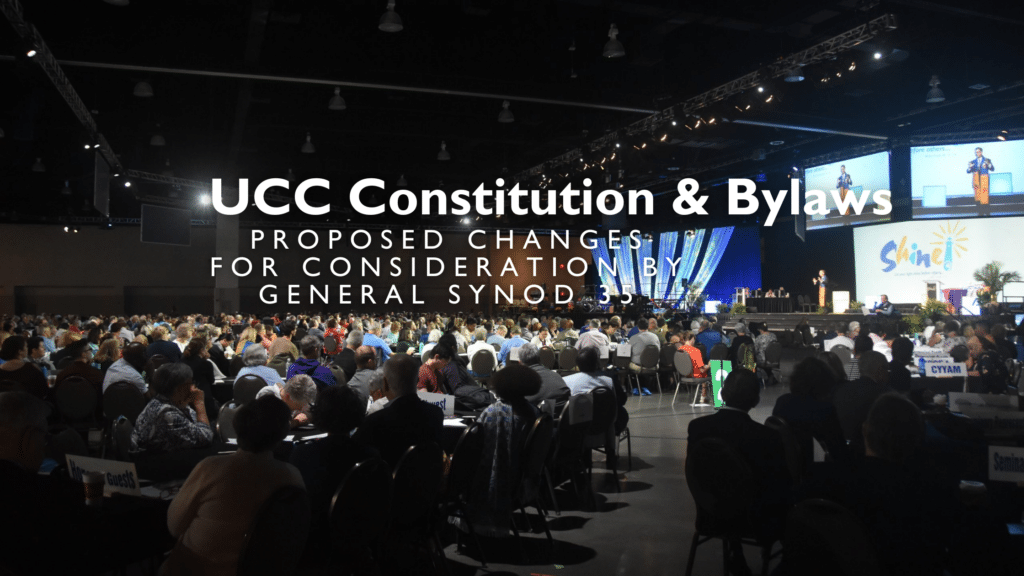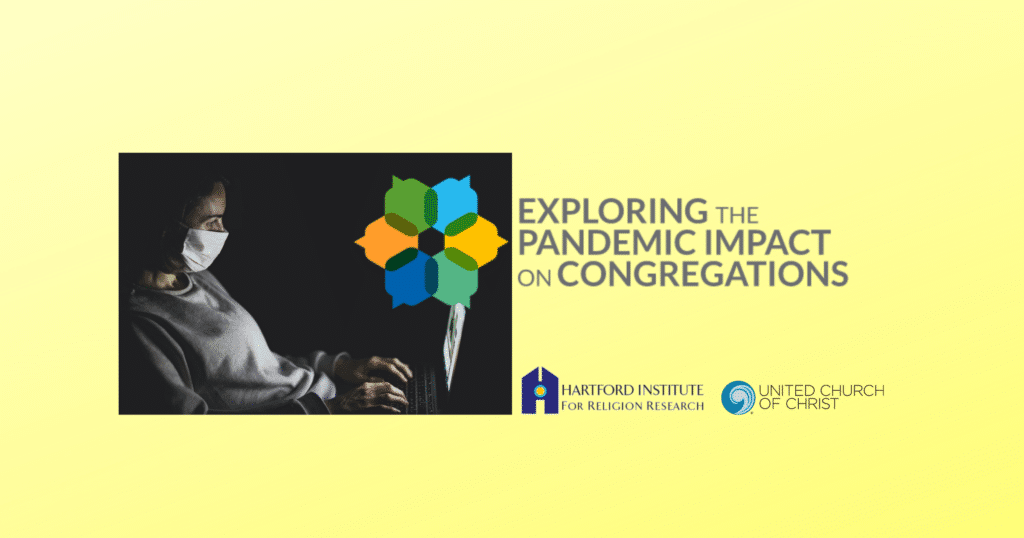A ‘Just Peace’ future: Part 1
Following the recently concluded World Council of Churches’ International Ecumenical Peace Convocation held in Kingston, Jamaica, United Church News asked Susan Brooks Thistlethwaite to reflect on the history, progress and potential future of the Just Peace movement. In 1986, Thistlethwaite edited the book, “A Just Peace Church,” which challenged the United Church of Christ and its ecumenical partners to adopt the Just Peace paradigm as a core theological grounding. In this two-part series, Thistlethwaite will first recount the activities of the Just Peace movement over the last 25 years and then position the paradigm in a post 9/11 world.
“Courage in the struggle for justice and peace” is one of the powerful affirmations in the United Church of Christ Statement of Faith. It is central to the identity of our church. It is one of our most ardent prayers and richest blessings. To be part of the United Church of Christ is to be part of the struggle for justice and peace.
In June of 1985 the Fifteenth General Synod, meeting in Ames, Iowa, took two important actions to strengthen this identity. They declared justice and peace to be two of the priorities of the church for the next four years. And they passed a Pronouncement “Affirming the United Church of Christ to be a Just Peace Church.”
The first draft of what became the “Just Peace” document was published in October 1984 and circulated widely throughout the church. Many people and groups reacted to this draft, sending in hundreds of pages in response. The first draft and the response to it became the basis for the Pronouncement and the Proposal for Action, which were sent to the Fifteenth General Synod. The debate and the action of that synod have, in turn, provided a basis for the book, A Just Peace Church.
In declaring itself to be a “Just Peace Church” the United Church of Christ took made several important declarations: The church as church made a specifically biblical and theological affirmation: it affirmed that making peace and doing justice are the task of Christians given to them by God in the shalom vision. This United Church of Christ document further developed a new theological language or theological paradigm of peace theology, moving beyond the three historic paradigms: pacifism, just war, and crusade.
In the years following the adoption of the Just Peace pronouncement, many churches throughout the United Church of Christ declared themselves “Just Peace Churches” and engaged in a wide variety of activities to widen and deepen that concept. Unfortunately, the United Church of Christ did not continue to participate in the nearly quarter of a century of ecumenical, and now interfaith work, that has followed that has developed the concept of Just Peace into an established paradigm for considering peace and war. It is my ardent hope that is about to change.
Just Peace in Christian Ecumenism
The United Church of Christ is not the only Christian denomination to have considered what the church and individual disciples are called to be and do in a warring world. The United Methodists, the Presbyterian Church USA, the Lutheran Church in America and the American Catholic Bishops all issued statements and pronouncements during the 1980’s addressing various aspects of this aspect of the human condition and positing theological and biblical responses.
For example, in their pastoral letter “The Challenge of Peace,” the U.S. Catholic Bishops say “Recognition of the Church’s responsibility to join with others in the work of peace is a major force behind the call today to develop a theology of peace. Much of the history of Catholic theology on war and peace has focused on limiting the resort to force in human affairs; this task is still necessary,….but it is not a sufficient response. A fresh reappraisal which includes a developed theology of peace will require contributions from several sectors of the Church’s life: Biblical studies, systematic and moral theology, ecclesiology, and the experience and insights of members of the church who have struggled in various ways to make and keep the peace in this often violent age.”
Official statements of the Presbyterian Church, United Methodist Church, and United Church of Christ proclaimed similarly that while the two predominant paradigms limiting the resort to force, just war theory and pacifism, are still necessary, we also need a positive theory of just peacemaking. In addition, several Christian ethicists from different denominations, both just war theorist and pacifist, authored books calling for the development of a just peacemaking theory.
During the mid-1990’s an ad hoc group of twenty-three scholars – Christian ethicists, biblical and moral theologians, international relations scholars, peace activist, and conflict resolution specialists got together in meetings of the Society of Christian Ethics, the American Academy of Religion, by research and correspondence between meetings, and in major working conferences at the Abbey of Gethsemani in Trappist, Kentucky, and at the Carter Center in Atlanta. We, and I was one of them, worked completely under our own auspices, though many of us had been part of our own denominational efforts to articulate the church’s response to justice and peace for a very long time.
The results of our work were published in the book Just Peacemaking: Ten Practices for Abolishing War, edited by Glen Stassen. I have often presented this document to groups by saying that the read subtitle should be “How to end war in your spare time” for the great emphasis we put on grassroots and lay activism in the strategies for Just Peacemaking.
Over the five years we worked together, we attempted to develop a road map for actions that actually participate in effective forces that are turning major parts of our world from war to peace. When actions participate in these world-changing forces, they are not mere ideals; they are isolated and random; rather, they are forces multiplied in strength and effectiveness.
We elaborated an approach called “practice norms”. Practice norms are a method that eschews theory in favor of the normative nature of practices that have a proven track record in helping to reduce violence and increase the presence of peace. One of the most attractive aspects of practice norms as a guiding premise is that our final list of “ten peacemaking practices” engages more in description than prescription. Each practice is introduced with a verb, the historical development and specific instances in which it has been used are described, our rationale for inclusion in the list of ten is included and the use of this practice norm in the future is briefly described as well. Practice norms completely by-pass the way in which peacemaking is often dismissed: the “well, that’s nice but it’s not possible.” Practice norms come out of the possible and lead to greater possibility.
Thus the ten just peacemaking practices in our consensus model were not merely a wish list. They are empirical practices in our present history that are, in fact, spreading peace. They are engendering positive-feedback loops, so they are growing in strength. They are pushing back the frontiers of war and spreading the zones of peace. We, the authors of Just Peacemaking, came to believe that because these emerging empirical practices are changing our world for the better and pushing back the frontiers of war, they are moral as well as empirical guides for all responsible and caring persons. They call all persons of good will to lend their shoulders to the effort. They give realistic guidance for grassroots groups, voluntary associations, and groups in congregations.
Several historical forces produced the rationale that went into our work that produced Just Peacemaking. It is interesting and very instructive that these forces, so powerful in the mid to late 1990’s have now almost been completely eclipsed by newer historical forces, though forces that find their point of origin often in the historical moments we identified.
We noted that after World War II, the world was stunned by the devastation of the war and the threat of nuclear weapons. The reality of that universally perceived thereat persuaded people and institutions to develop new practices and networks to prevent another world war and the use of nuclear weapons. Now in the more than sixty years that have passed, we have so far we have avoided those two specters. Yet, more recent developments have shown that nuclear proliferation is a grave threat in the middle of the first decade of the new millennium.
We were initially writing at the end of the Cold War and anticipating the turning of the millennium. What we saw was the ending of the hostile rivalry between the United States and the Soviet Union and their mutual nuclear escalation; we thought we knew who we were as peacemakers in a Cold War era. Our question was, who are we in the post-cold war? Even then, the problem seemed much more diffuse. We sensed at the time a growing frustration that the divide continued between just war and pacifist paradigms. That meant that the debate was always framed around whether or not to make war. The introduction of the practice norms approach was specifically to increase the things that make for peace, i.e. prevention of war and reduction of harm within conflicts.
The theological development of the Just Peacemaking group was intentionally very open-ended. In the book, we wrote “We purposely fashioned the wording of the ten practices of just peacemaking so they could be adopted by persons of many faiths or no official faith. We wrote chapters explaining each practice so its basis can be seen clearly in what is actually happening in our time to change the world. We appeal to all people of good will to adopt these practices and work for them, grounding themselves in a commitment to change our world (or at least their own little briar patch) to peace rather than war and oppression. Each person can base these practices on his or her own faith. A Muslim or Buddhist or simply a social scientist or human being whose experience has led her or him to care about making peace, not war, can say, “Yes, this is happening in ways I had not fully realized, and it is making a huge difference for good, and I want to support it.” We hope many, from diverse perspectives, will make these peacemaking practices their own.”
Yet, as events have unfolded, this now reads to me as naïve about other religions and romantic about our own intentions. Despite the fact the original Just Peacemaking book has been through several editions, and a re-writing post 9/11, time has revealed a great deal more about other religions and peacemaking and it was clear our efforts were not enough.
Part 2 of Thistlethwaite’s reflection will be published Monday, June 13.
The Rev. Susan Brooks Thistlethwaite is an ordained minister in the United Church of Christ since 1974 and a Senior Fellow at the Center for American Progress. She is also Professor of Theology at the UCC’s Chicago Theological Seminary and its former president from 1998 and 2008.
Related News
Changes to UCC’s Constitution and Bylaws to be considered by General Synod 35
The 35th General Synod of the United Church of Christ, which will take place July 11-15 in...
Read MoreUCC celebrates Womxn’s History Month in March and beyond
Womxn's History Month is designated in March, and the United Church of Christ is celebrating....
Read MoreFive years later: How did the Covid-19 pandemic impact ministry?
On March 11, 2020, the World Health Organization officially declared Covid-19 a global...
Read More

